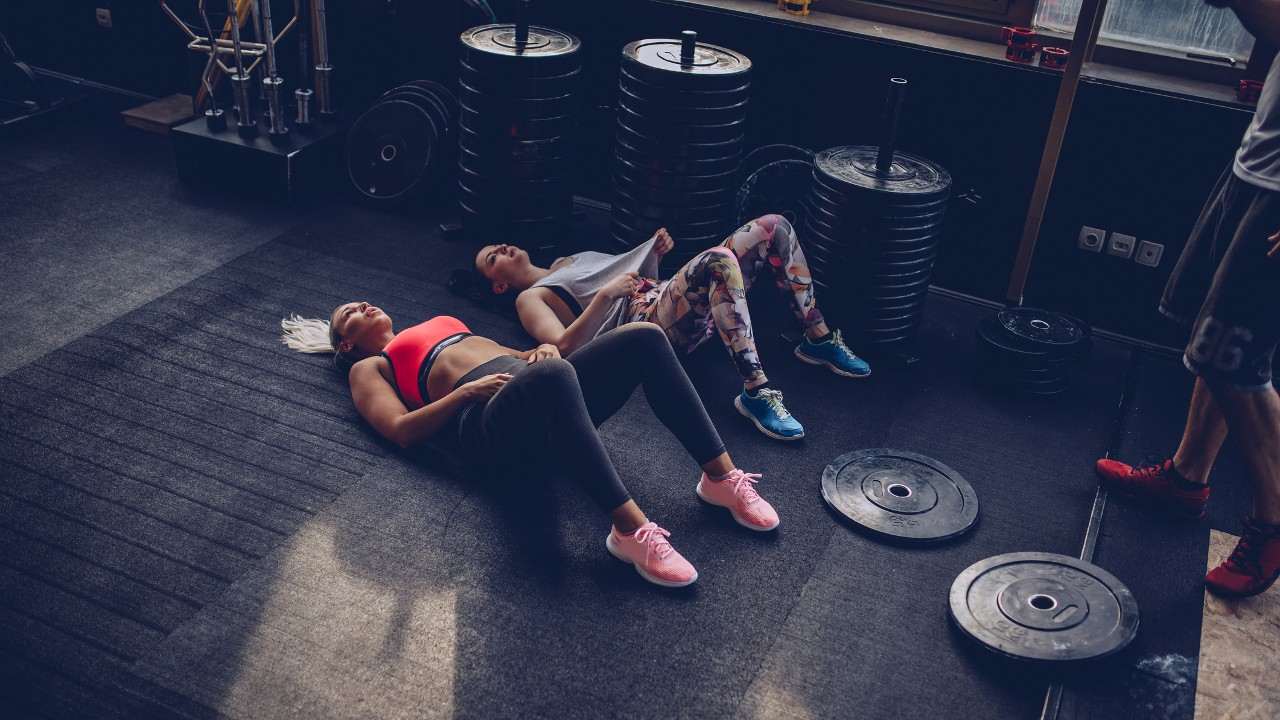
Adding weights to your HIIT workout is a brilliant way to build strength, burn calories and maximise the intensity of your workout. Amy Scott – personal trainer and owner of A E Scott Fitness – has mastered the art of programming a high-quality HIIT session and this one is guaranteed to put you through your paces.
“Although some of the exercises are technical, this workout is accessible for all levels,” Scott says. “All you need is a pair of medium to heavy dumbbells, a weight plate, and a kettlebell.”
Obviously a gym will have all those free weights, but if you fancy creating a well-stocked home gym, browse our selections of the best dumbbells, best weight plates and best kettlebells.
How To Do This HIIT Workout With Weights
“This workout uses two paired exercises performed as a Tabata,” Scott says. Tabata training is a popular but intense workout protocol, in which you traditionally perform eight rounds of all-out effort and a brief period of rest. Here, though, you’ll alternate between two exercises.
“Work for 20 seconds, then rest for 10 seconds, alternating between the two exercises eight times for a total of four minutes,” says Scott.
Rest for one minute between exercises. There are three pairs in total. Set aside time to warm up and warm down afterwards.
1A Dumbbell clean and press
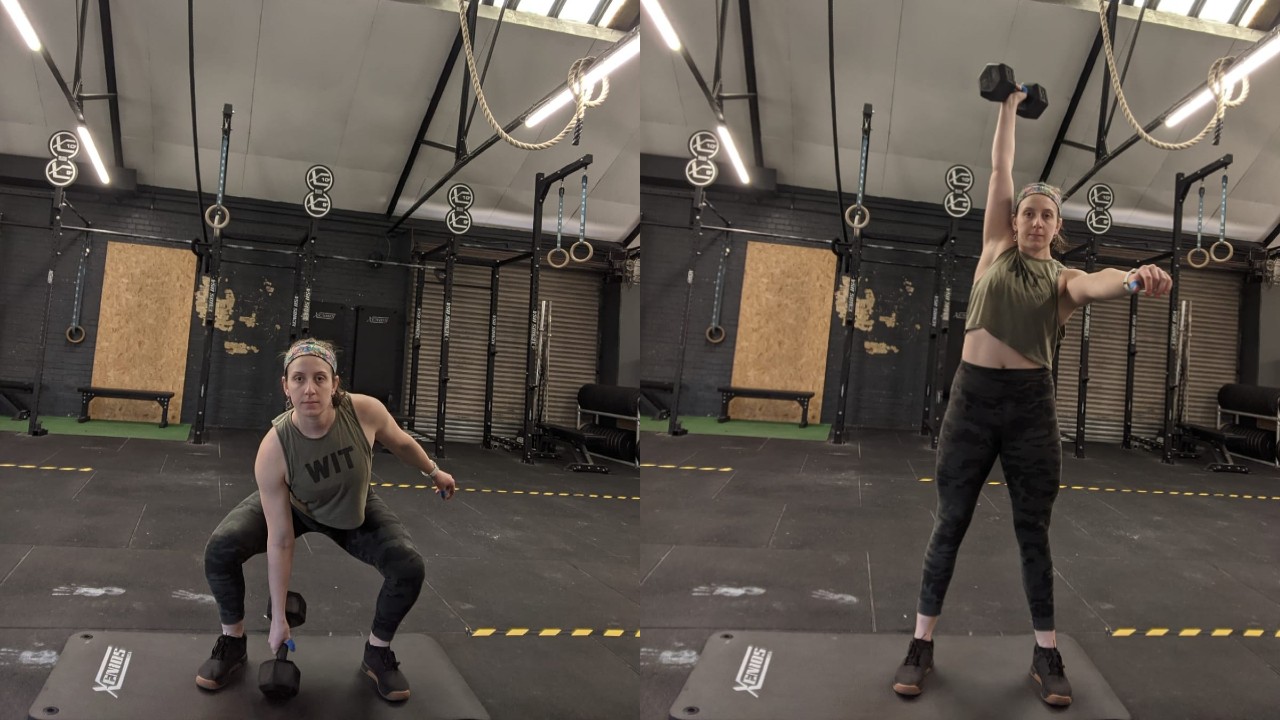
Sets 4 Time 20sec Rest 10sec
Get the Coach Newsletter
Sign up for workout ideas, training advice, reviews of the latest gear and more.
Stand with your feet shoulder-width apart holding dumbbells by your sides in an overhand grip, palms facing your body. Engage your core. Hinge forwards at your hips and push your bum back, then bend your knees and lower into a partial squat. Perform the dumbbell clean by driving through your heels, extending your legs and thrusting your hips forwards to stand; use this momentum to simultaneously drive the weights up to your shoulders as you stand. Ensure your elbows stay raised and the weights remain close to your body. For the press, maintain a slight bend in your knees, keep your core engaged, and press the weights above your head. Lower the weights to your shoulders under control and reverse the movement back to your starting position to complete one rep.
Practise the clean a few times before progressing to the press. Avoid overextending at your hips because this can place extra pressure on your lower back.
1B Burpee
Sets 4 Time 20sec Rest 10sec
Stand with your feet shoulder-width apart. Place your hands on the floor inside your feet, step or jump back into a high plank, then perform a press-up, keeping your core engaged so your hips don’t sag. Jump your feet to the outside of your hands, then explosively jump straight up and raise your hands above your head.
Remove the press-up if you’re struggling to maintain form.
2A Kettlebell goblet squat
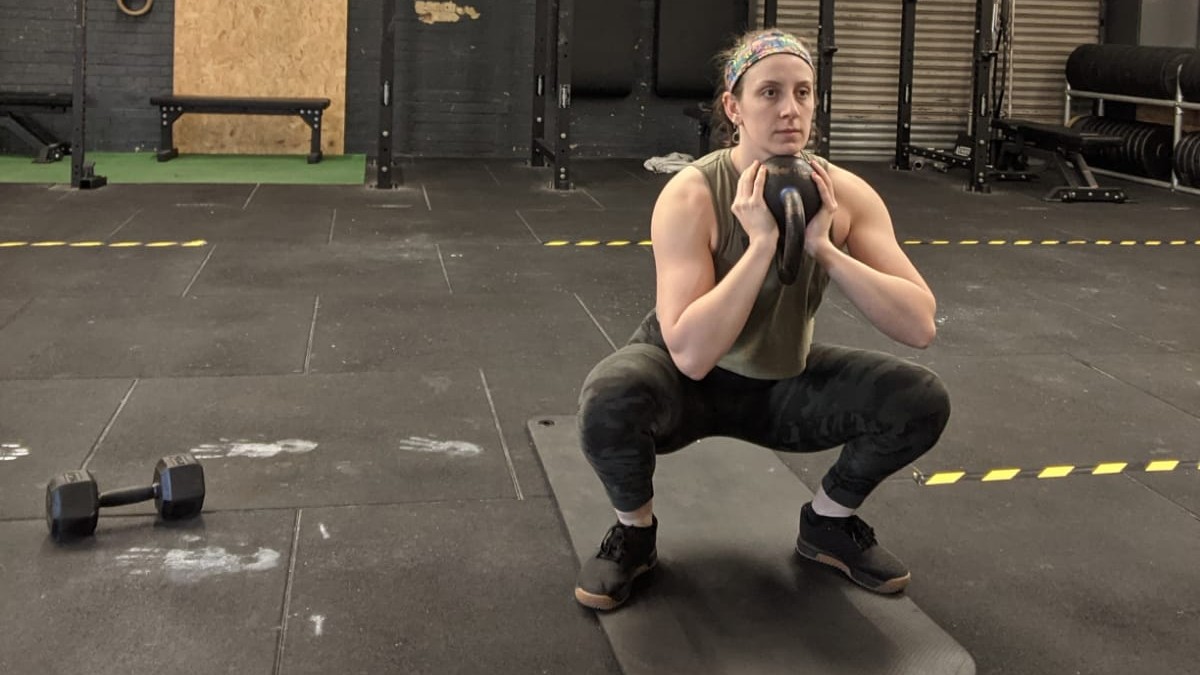
Sets 4 Time 20sec Rest 10sec
Stand with your feet shoulder-width apart and toes pointing forwards. Hold the kettlebell in both hands close to your chest. Engage your core, then push your hips back and bend your knees to lower until your thighs parallel to the floor. Ensure your centre of gravity remains over your heels and keep your chest up. Drive through your heels to stand and give your glutes a good squeeze at the top.
Avoid rounding your spine as you squat and don’t overextend your hips at the top of the exercise.
2B Plank taps
Sets 4 Time 20sec Rest 10sec
Start in a high plank position with your shoulders over your hands, toes tucked under and arms extended, creating a straight line from head to toe.
Engage your core, glutes and thighs, and keep your hips raised. Tap your right shoulder with your left hand, then place your left hand back on the floor. Then tap your left shoulder with your right hand. Continue, alternating sides. Avoid swinging your hips.
3A Weight plate ground to overhead
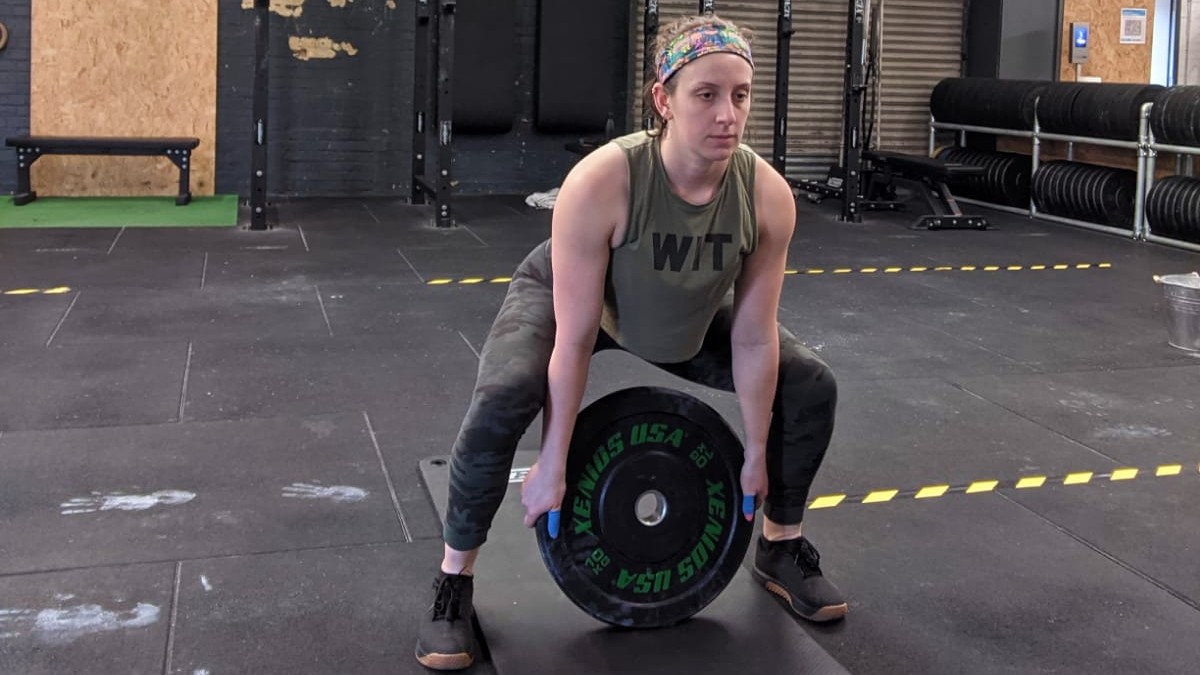
Sets 4 Time 20sec Rest 10sec
Stand with your feet shoulder-width apart and your toes pointing outwards at 45°.
Hold the weight plate in both hands close to your chest with your palms facing you. Engage your core and keep your back flat throughout. Hinge forwards at your hips, push your bum back and bend your knees slightly as you extend your arms and tap the floor. Drive your hips forwards and extend your legs to bring the weight back to the starting position by your chest. Keeping a soft bend in your knees, press the weight above your head. Lower the weight back to chest level under control.
This exercise should be performed as one fluid movement.
3B Weight plate overhead lunge
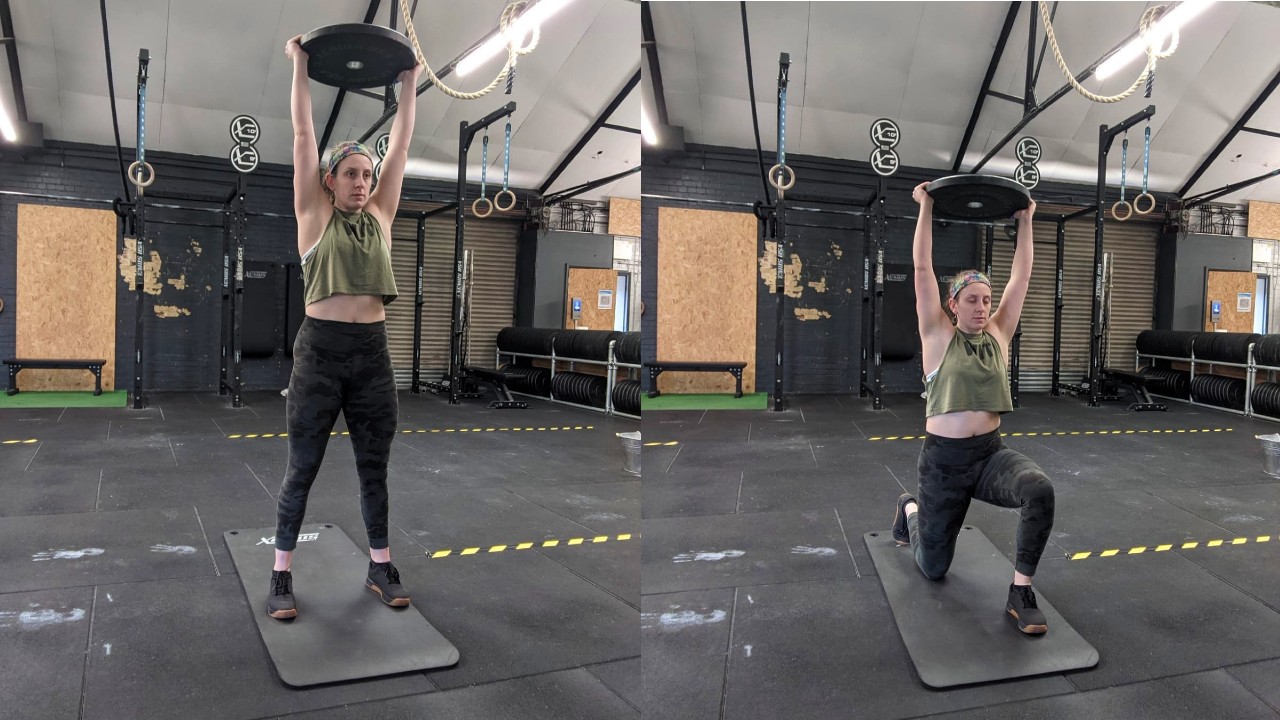
Sets 4 Time 20sec Rest 10sec
Stand with your feet shoulder-width apart and hold the weight in both hands, close to your chest. Engage your core, then press the weight above your head and lock out your elbows. With your core still engaged, step back into a lunge, keeping your front knee directly over your front hee. Slowly lower your back knee to the floor, aiming for a light tap, then driving through your front heel to return to standing. Alternate legs with each rep.
Leaning forwards is common during an overhead lunge; while a slight lean is fine, try to avoid any excess leaning and lift through your spine instead. Try walking lunges as a progression for this exercise.

Sam is a personal trainer, reiki practitioner, and fitness writer at Future, the publisher of Coach. Having been trained to work with both the mind and body, Sam is an advocate of using mindfulness techniques in sport and aims to bring mental wellbeing to the forefront of fitness. She’s also passionate about the fundamentals of training and how we can build more sustainable training methods. She writes about the importance of habit-building, nutrition, sleep, recovery and workouts.









